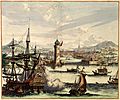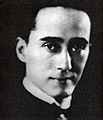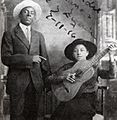Cuban music facts for kids
Cuban music comes from the sunny Caribbean island of Cuba. This island has created many different kinds of music. These styles mix ideas from its cultural roots in Europe and Africa. Cuban music has become super popular and important all over the world. It might be the most famous type of world music since recording technology first appeared.
The music of Cuba, including its instruments and dances, mostly comes from Spanish and African traditions. Most of today's Cuban music is a mix of these two big influences. The original people of Cuba are no longer around, so very little of their music traditions remain.
Contents
How Cuban Music Began
Many African slaves and European (mostly Spanish) people came to Cuba. They brought their own music with them. European dances and folk music like the zapateo, fandango, paso doble, minuet, gavotte, contradanza, and waltz became popular among white city dwellers.
African slaves and their families made many percussion instruments. They also kept alive the rhythms they knew from their homelands. The most important instruments were the drums. Other key instruments include the claves, which are two short wooden sticks, and the cajón, a wooden box. Claves are still used a lot today. Cajons were used when drums were not allowed.
The Spanish brought the guitar to Cuba, which was a big musical gift. Even more important was their way of writing down music (musical notation) and their methods for creating songs.
Fernando Ortíz, a famous Cuban writer, said that Cuba's new music styles came from the mix of African slaves on big sugar farms and Spanish or Canary Islander farmers who grew tobacco.
African beliefs and practices definitely shaped Cuban music. Playing many rhythms at once (called polyrhythmic percussion) is a natural part of African life and music. This is like how melody is a big part of European music. Another common feature is syncopation, where rhythms sound off-beat. You can hear this in the cinquillo, a basic rhythm in the habanera, the danzón, the Argentine tango, and other dances.
In African traditions, percussion, singing, and dancing are all connected to a specific social event. Music isn't just entertainment; it's part of life itself. When European and African cultures met, most Cuban popular music became a blend, or "creolized." This mixing of Cuban life has been happening for a long time. By the 1900s, African beliefs, music, and dance were well mixed into popular and folk music styles.
Cuban music has had a huge impact on other countries. It helped create jazz and salsa. It also influenced Argentinian tango, Ghanaian highlife, West African afrobeat, and Spanish Nuevo flamenco.
A Look at Music History
In the 1800s, Manuel Saumell (1818–1870) was known as the father of Cuban creole music. He helped change the European contradanza by adding African rhythms. He also played a part in creating the habanera and the danzon, two unique Cuban dance styles.
In the mid-1800s, a young American musician named Louis Moreau Gottschalk (1829–1869) came to Havana. He was a piano genius who had heard music and seen dancing in Congo Square, New Orleans, since he was a child. He lived in Cuba from 1853 to 1862, also visiting Puerto Rico and Martinique. He wrote many famous songs that truly felt Cuban, as they used traditions from both white and black cultures.
Popular Cuban Music Styles
From the 1700s to today, popular theater shows used and created music and dance. Besides showing some European operas, Cuban composers slowly developed ideas that fit their local audience better. Recorded music helped Cuban music reach the world. The most recorded artist in Cuba until 1925 was a singer named Adolfo Colombo. Records show he recorded about 350 songs between 1906 and 1917, but very few of them still exist today.
The first theater in Havana opened in 1776. The first opera written by a Cuban appeared in 1807. Musical theater was super important in the 1800s and early 1900s. Radio, which started in Cuba in 1922, helped popular music grow. It gave artists publicity and a new way to earn money.
Zarzuela: A Musical Play
Zarzuela is a smaller, lighter type of musical play. It started with plays brought from Spain. But it soon became a way to talk about Cuba's social and political issues. Many top composers, like Ernesto Lecuona, wrote hit songs for Havana's theaters. Great stars like the vedette Rita Montaner could sing, play piano, dance, and act. She was like the Cuban version of famous performers such as Mistinguett and Josephine Baker in Paris.
Guaracha: Fast and Fun
The guaracha is a fast-paced music style with catchy lyrics. It started in funny theater shows called Bufo. The songs were full of slang and talked about news and people.
Contradanza: A Group Dance
The contradanza is a very important historical dance. It came to Cuba from Europe in the late 1700s. The contradanza is a group dance where dancers follow a set pattern. The music was bright and quite fast.
Danza: The Contradanza's Child
This dance, which came from the contradanza, was also danced in lines or squares. It was a lively music and dance style that could be in double or triple time.
Habanera: A Sung Dance
The habanera grew out of the contradanza in the early 1800s. Its big new thing was that it was sung, as well as played and danced.
The Waltz: A Couple's Dance
The waltz (El vals) arrived in Cuba by 1814. It was the first dance where couples were not linked in a group pattern. It was, and still is, danced in 3/4 time with the strong beat on the first count. The waltz became popular in all countries in the Americas. The waltz also has another special feature: it's a "traveling" dance, with couples moving around the dance floor.
Zapateo: A Foot-Tapping Dance
This is a typical Cuban dance. It's a dance for pairs, where the man especially taps his feet a lot.
Trova: Traveling Musicians
In the 1800s, a group of traveling musicians, called troubadours, grew up in Santiago de Cuba. They earned a living by singing and playing the guitar. They were very important as songwriters, and their songs have been used in all kinds of Cuban music.
Bolero: A Romantic Rhythm
The bolero has always been a key part of what trova musicians play. The bolero turned out to be super flexible and led to many different versions. For many decades, the bolero-son became the most popular rhythm for dancing in Cuba. This was the rhythm that international dance groups learned and taught as the wrongly named 'rumba'.
Cuban Jazz: A Long History
The story of jazz in Cuba was hidden for many years. However, it's now clear that jazz has been in Cuba almost as long as it has been in the USA.
A documentary movie called Buena Vista Social Club, directed by Wim Wenders, came out in 1999. It earned $23 million worldwide by 2007. A younger generation discovered why Cuban music was so popular.
Images for kids
-
José White in 1856, after receiving ana award from the Conservatoire de Paris
-
Claudio José Domingo Brindis de Salas y Garrido, called the "Black "Paganini" posing with his famous Stradivarius
-
Cha-Cha rhythm.
-
A local musical house, Casa de la Trova, at Santiago de Cuba
See also
 In Spanish: Música de Cuba para niños
In Spanish: Música de Cuba para niños












































